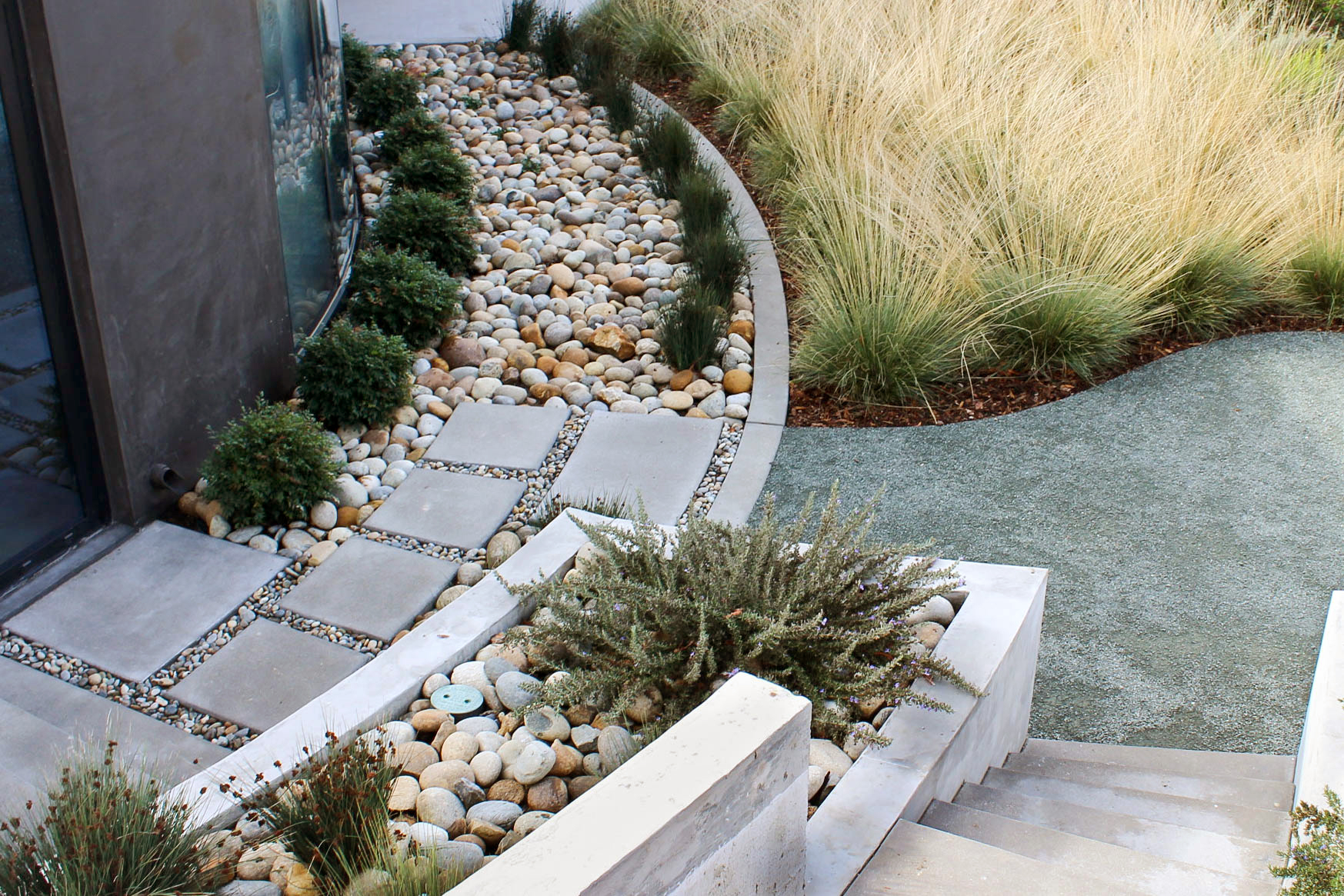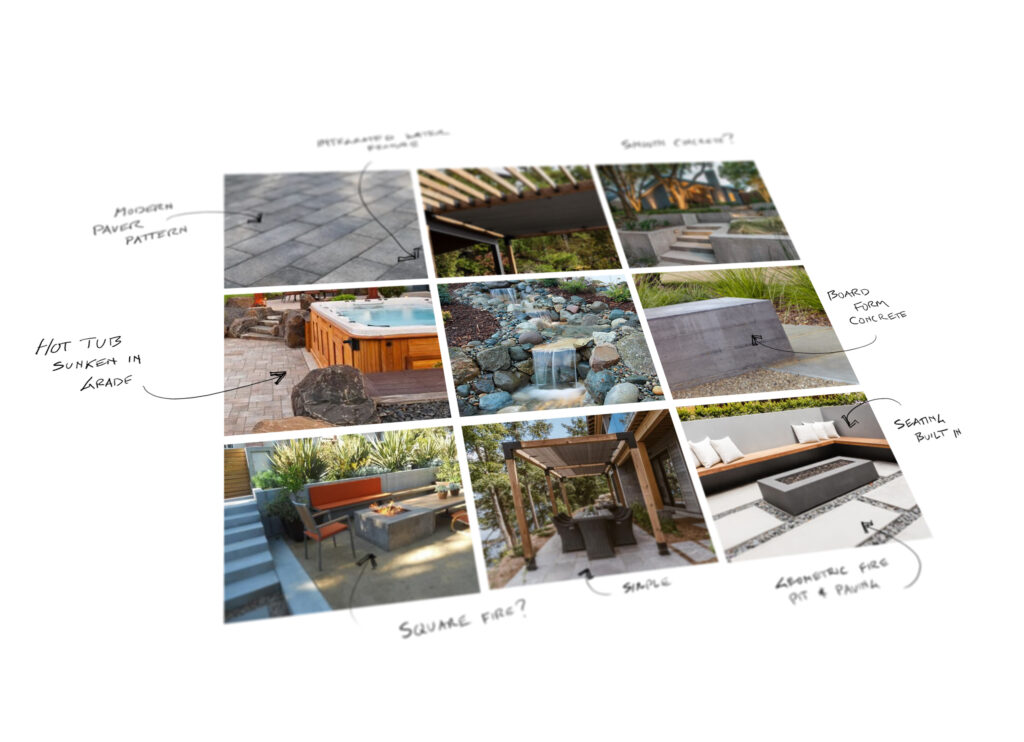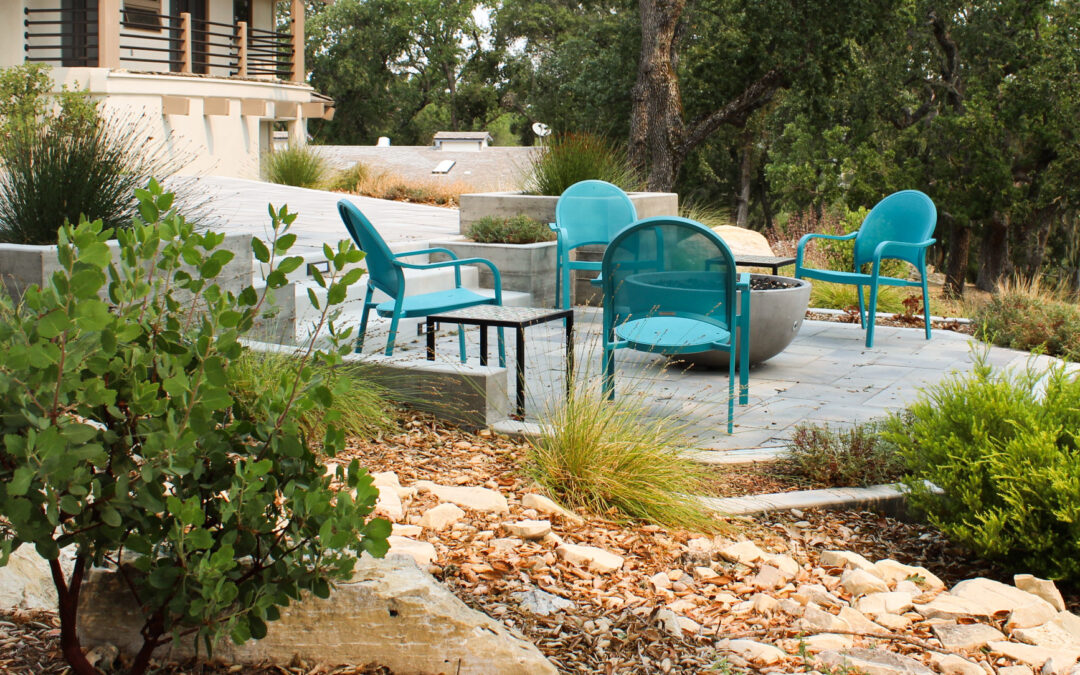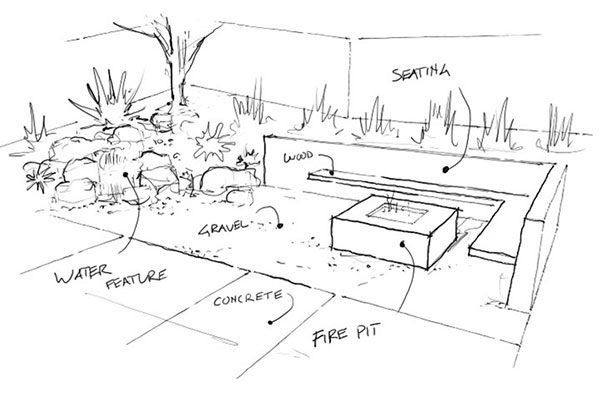Plants breathe life into gardens, offering seasonal dynamism. During the spring, radiant flowers blossom, and deciduous trees flaunt lush foliage, only to become stark in winter. This landscape design guide will help you factor in these seasonal shifts for a well-thought-out strategy that beautifully balances the ever-changing nature of plant life.
However, lasting elements like hardscape materials (think concrete, stone), outdoor furniture, pergolas, fire pits, and water features provide a constant backdrop. When harmonized with seasonal plantings, these elements impart a unique ambiance throughout the year.
Wondering how to transition from a bland lawn with deteriorating surroundings to a dream garden space? This landscape design guide will help you.
The initial steps are straightforward; but as you proceed, expertise in design becomes essential. A landscape designer will greatly benefit from your preliminary research and ideas. Investing time in understanding and pinpointing your preferred landscaping styles will refine your design aspirations.

Discover Local Landscaping Styles
Embark on a neighborhood stroll. Bring along a companion to evaluate various landscape styles. Discuss the highs and lows of each design, noting standout plants and materials. Equip yourself with a notebook for jotting points and a smartphone for capturing images. Don’t restrict your exploration to just your immediate neighborhood. Venture further to discover unique architectural and landscape inspirations.

Gather Digital Inspiration
Following your local exploration, dive into the vast digital world. Platforms like Pinterest, Houzz, Instagram, and HGTV are treasure troves for landscaping ideas. Tailor your online search for region-specific inspirations like California or Mediterranean landscapes, emphasizing drought-resistant or native plants. Familiarize yourself with terms like “xeric” or “ornamental grass” to better communicate with industry professionals.

Craft a Materials Palette
With a collection of inspiration at hand, start categorizing. Separate your finds into:
Character: Character photos contain a mix of elements, including furniture, architecture, vegetation, and landscape. These images are often broad angles and represent a particular style or sense of place.
Hardscape: Hardscape is the structure and backbone of a site—walls, flatwork, fountains, walkways, boulders, rock mulch—anything that is installed once and stays put. Hardscape elements are typically the biggest-ticket items, consistent throughout all seasons, and relate closely to building layout and materials.
Plant Palette: Plants breathe life into a space—yet come with a unique set of opportunities and strengths; not the least of which is need for the proper combination of sun, soil, and water. Taking plant inspiration from the neighborhood is often one of the best ways to find climate-appropriate plant selections. Even so, the microclimates within your property (particularly sun and wind exposure) may differ and affect plant viability. A palette based on the desired look can be combined with some horticultural know-how to develop a specific plant list.
Transition to Professional Collaboration
Having established your materials palette, you’ve laid a solid foundation for your landscape’s transformation. This groundwork has set the stage for the next pivotal phase. While it’s empowering to spearhead the initial steps on your own, partnering with a professional will ensure the fruition of your vision. From this point on, the subsequent steps will be a collaborative effort, where you and the landscape expert work hand in hand. Their expertise will be invaluable in bringing your landscaping dream to life, ensuring both aesthetic appeal and practical functionality.

Develop a Conceptual Plan
Begin the design phase with a precise base map. This should encompass utility locations, existing greenery, and structural details. If unsure, consider hiring expert help. Concept plans broadly represent proposed changes, highlighting primary features.
Sketch Ground-Level Views
Vignettes or sketched views offer a ground-level perspective of your landscape. They provide a tangible feel of the space, supplementing your concept plan. Employ tools like Adobe Photoshop for digital sketches or stick to hand-drawn illustrations.
Delve into 3D Modeling
3D modeling tools, such as Google Sketchup, can elevate your design visualization. With an accurate base map, these tools help in plotting out your envisioned space in three dimensions.
Bring Your Design to Life with Rendering
Photorealistic rendering tools like Lumion offer a tangible glimpse of the potential landscape. By blending 3D models with realistic textures and elements, you get a vivid visualization of your dream garden.
Not everyone might find all steps achievable. But even accomplishing the initial stages can significantly assist landscape designers in realizing your dream. From plan drawings to advanced visualization tools, every stage plays a crucial role in materializing the perfect landscape for you.
Contact Us for an Ideal Landscape
Ready to bring your landscaping vision to life? Connect with our landscape design team today and let’s craft your dream garden together! Reach out at [email protected] or call (805) 466-6263.




